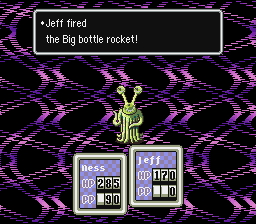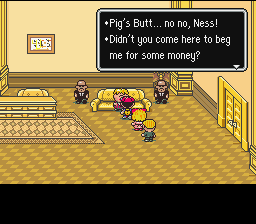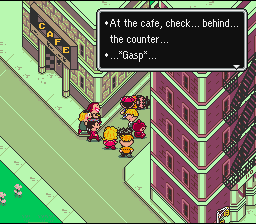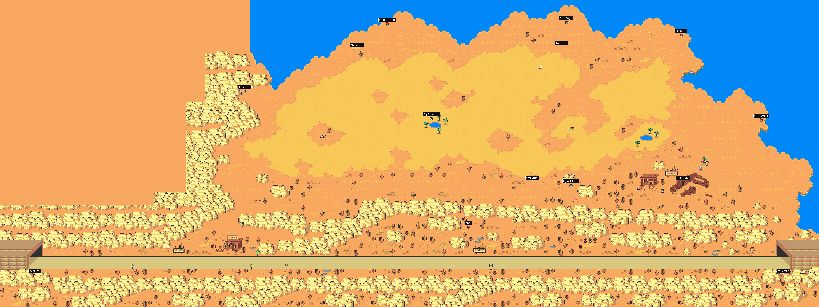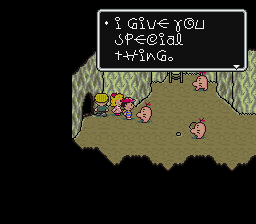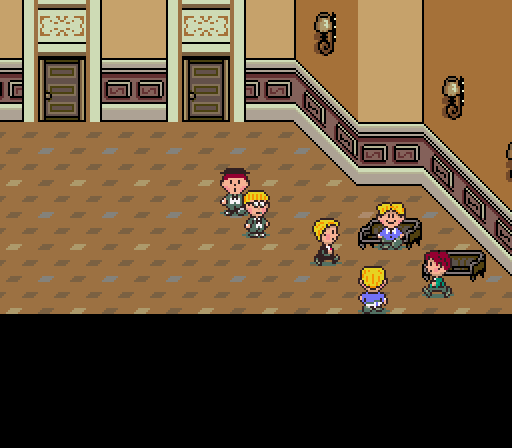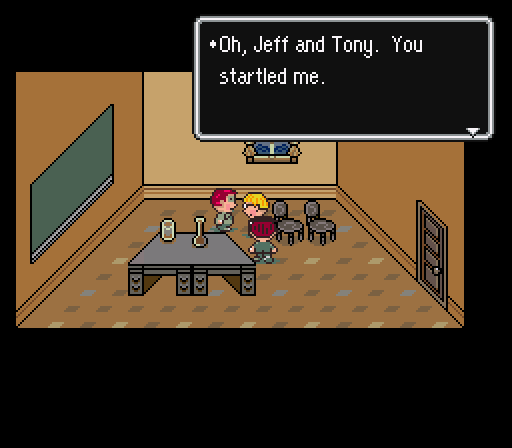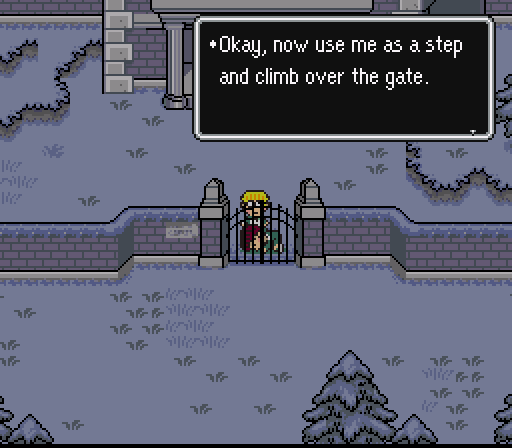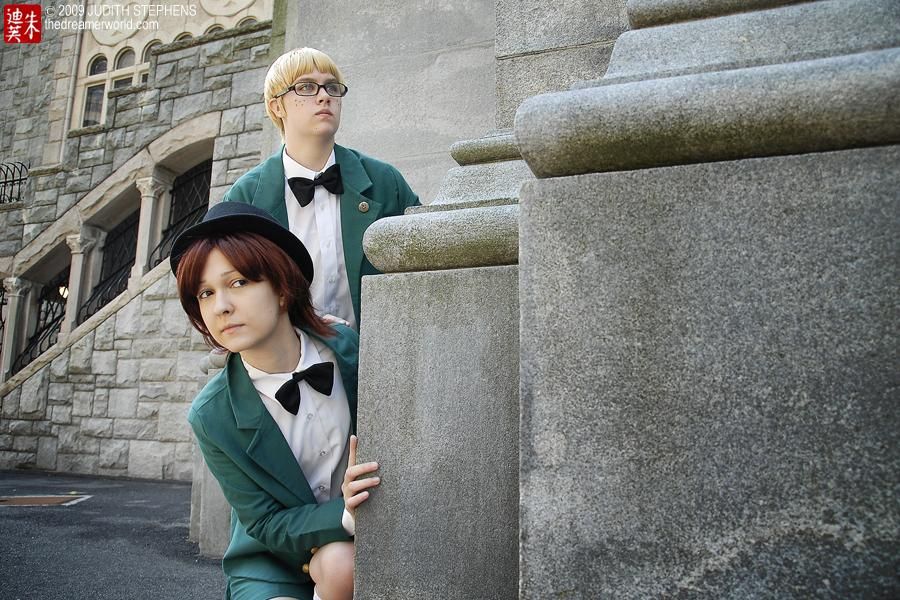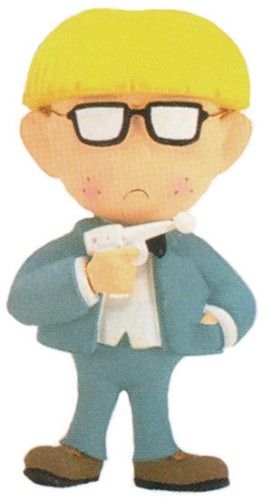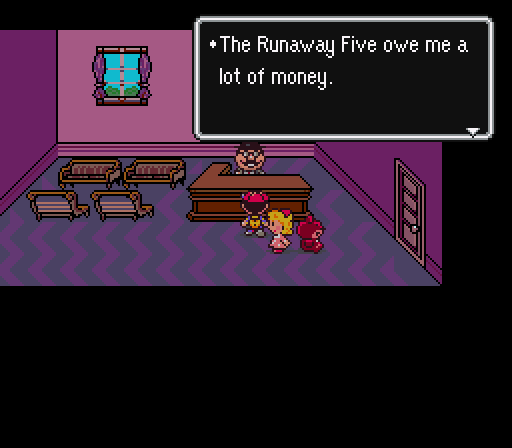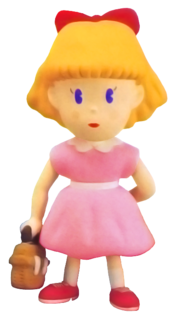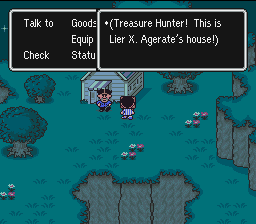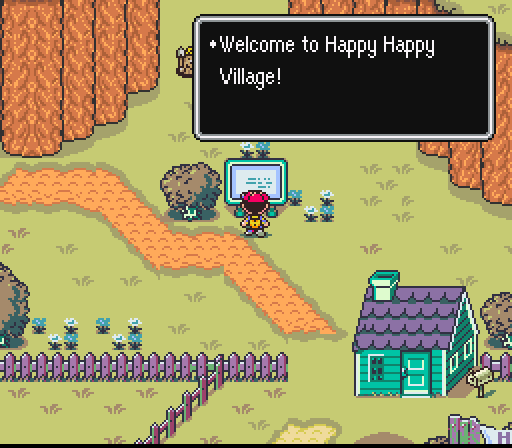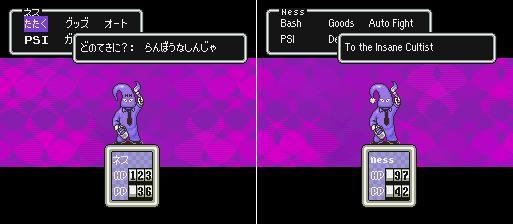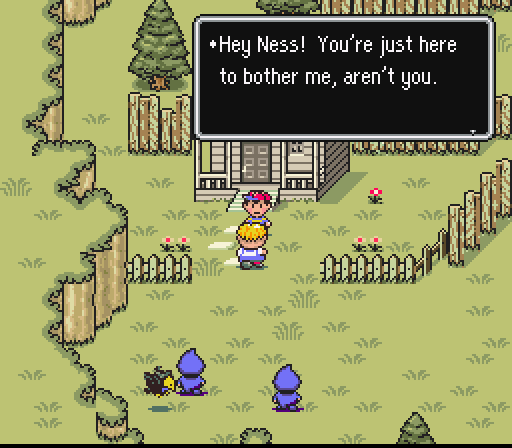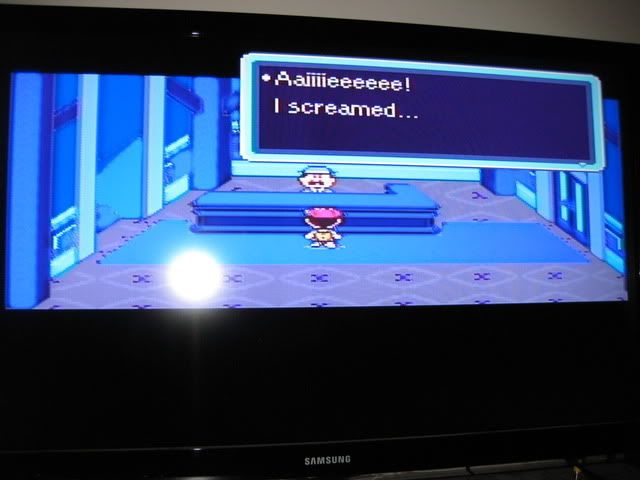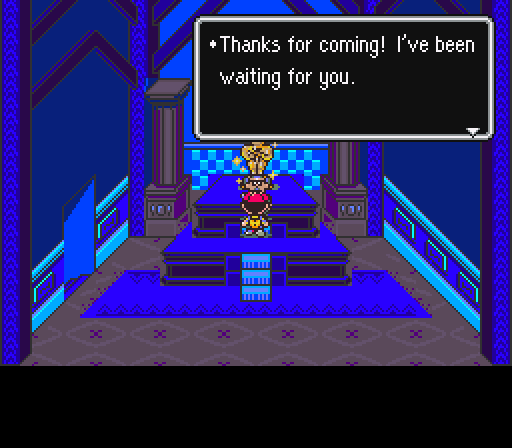Fourside, Part 2: Moonside and the Horrors of the American Dream
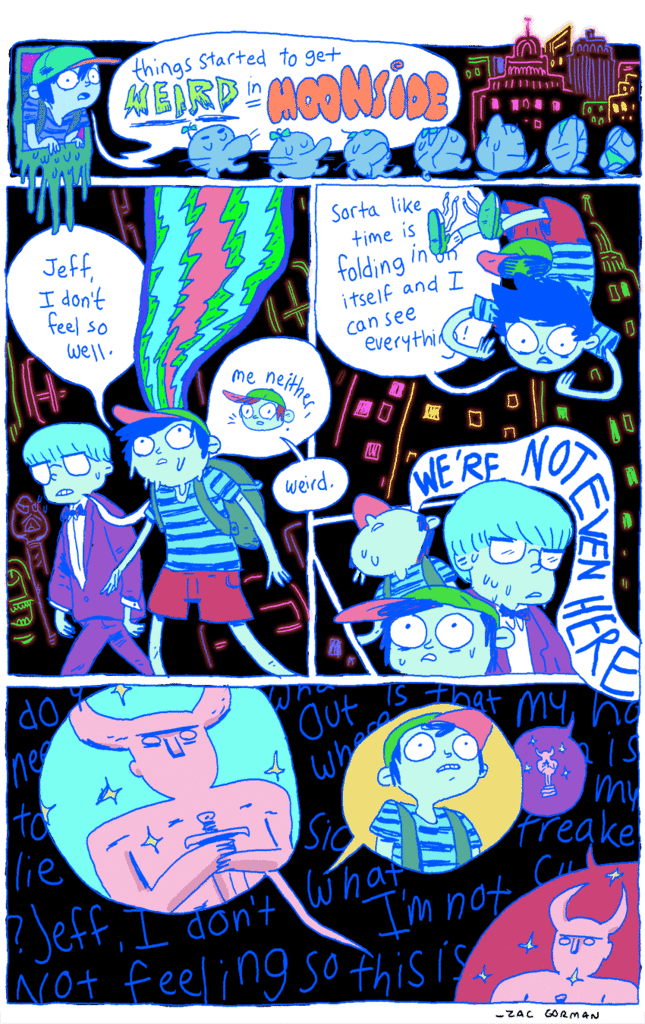
With Paula still kidnapped, Everdred tells Ness and Jeff to check behind the counter at Jackie’s Cafe. When they do, the boys are transported to Moonside.
Although Fourside is almost a clear representation of New York City, I’ve heard Moonside construed as a stand-in for the Las Vegas Strip. It makes sense, considering the garish neon sensibility and the trek through the desert to get there.
I think Moonside acts as a more overt representation of the seedy underbelly of the big city at night, and how strange and terrifying it can be for two boys from a midwest suburb and an English boarding school.
People lie to your face and purposefully misinterpret your responses (Yes becomes No and No becomes Yes). Invisible boundaries signify a complete ignorance on your part as to how to get around. The only way to find your way out is to trust complete strangers to teleport you with the click of a camera shutter about the city. Enemies roam the street represented by flickering flames, illuminating but still unknowable, untouchable.
I say “illuminating” because, like bad guys in other parts of Earthbound, they seem to indicate the nature of their environment.


Two of the four occurring enemies here are the Enraged Fire Plug and the Robo Pump, two ordinarily useful devices that make for a deadly combo – the fire hydrant deals crushing damage with a jet of a water, and the gas pump explodes after three rounds. These are symbols of American urbanization and the conquering of inconvenience and danger through infrastructure! Why are they killing us?


The other two enemies here are the Abstract Art and Dali’s Clock. They represent the kind of hip beatnik style I referenced earlier, the kind of things a cultured urbanite would at the very least be aware of. Though not as overtly dangerous as the other two, the art can hypnotize you, and the clock can freeze time, very creepily muting the background music while wailing on you.
Moonside is a city of conflicting identities. A haven for ideas and advancements for society, but also a place with dark alleys where society cannot defend you from knowledge you are too young to understand. A place of cultural understanding where nothing is what it seems and the truth is obfuscated by flashiness and idol worship.
Literal idol worship! The goal here in Moonside is to make your way through the not-quite-visible maze of the city to reach and destroy the Mani Mani Statue. In order to do that, you have to teleport around for a while until you are greeted by an invisible man with a unibrow and a gold tooth. The guy blocking the path to Mani Mani thinks this guy is so cool that he just has to leave his post and go get a drink with him. Adults are fucking weird
When you do defeat the Mani Mani Statue, you’re brought back to the warehouse behind Jackie’s Cafe, next to the battered idol. A mouse tells you that you were just walking around the warehouse with a glazed expression. Moonside was evidently an illusion created by Mani Mani.
That’s where the explanation ends. It’s unclear whether Moonside is an immutable fantasy world that Mani Mani has dominion over, or if it was a vision experienced only by Ness and Jeff. Is Moonside simply a manifestation of Ness’ fears and paranoia about the world he’s trying to save, projected by Mani Mani to protect itself?
Moonside acts as a neat little preview of the psychological bent Earthbound is only too eager to take from this point on.
Something that always struck me is how the Moonside theme reminded me of this unnamed song from Silent Hill, which was released about 4 years later. Some of Earthbound’s more intense music does have a similar foreboding quality to Silent Hill’s earlier songs, though there aren’t any apparent commonalities between the sound staff for either game. It stuck out to me, because both Moonside and Silent Hill are fucking weird. There are some clear nods toward Twin Peaks in the Silent Hill song, so I wonder if Moonside has similar inspirations.
That may not be so, because Moonside’s theme is based on a riff from Ric Ocasek’s “Keep On Laughin'”. From this point on, Earthbound’s music starts having a lot of interesting inspirations.



